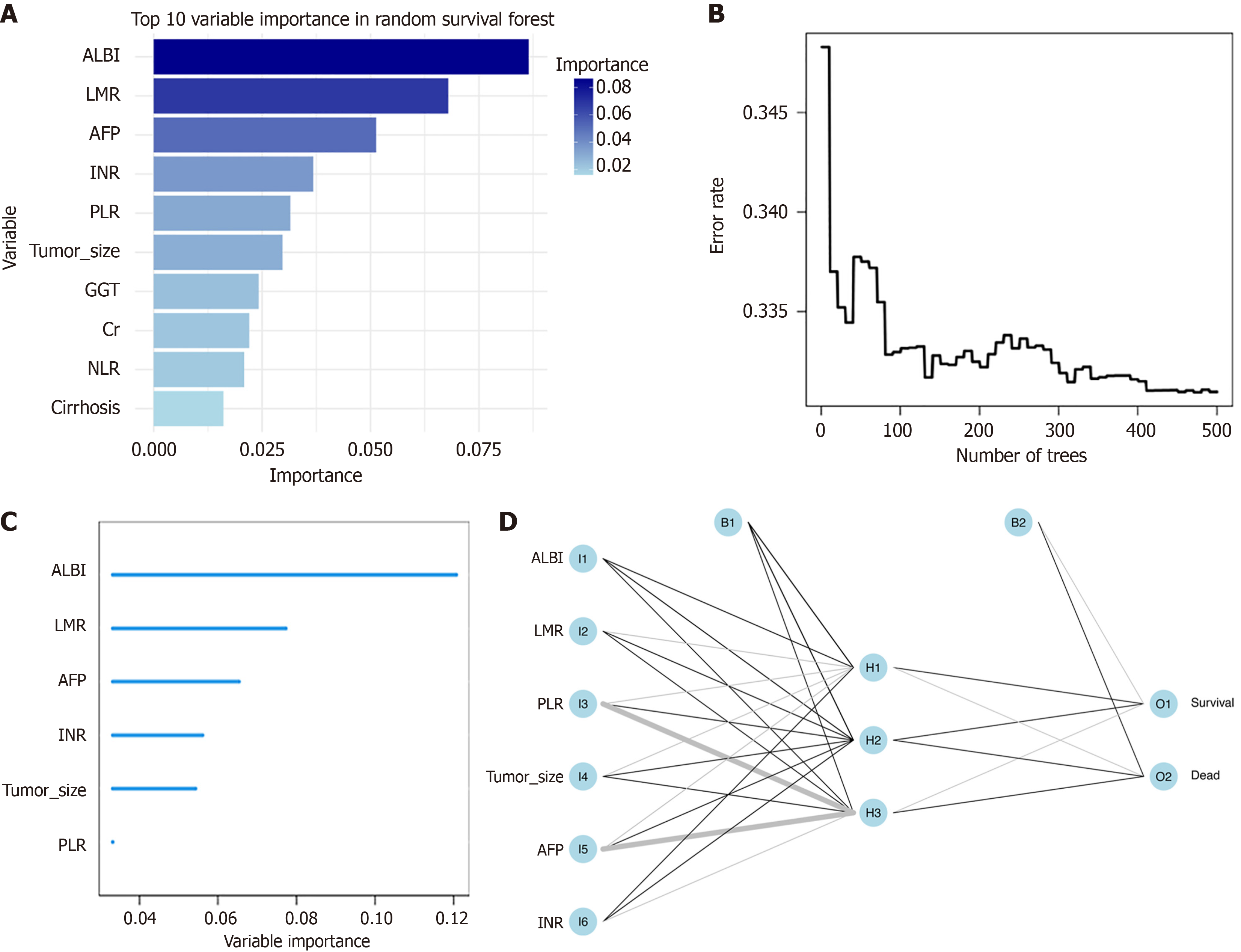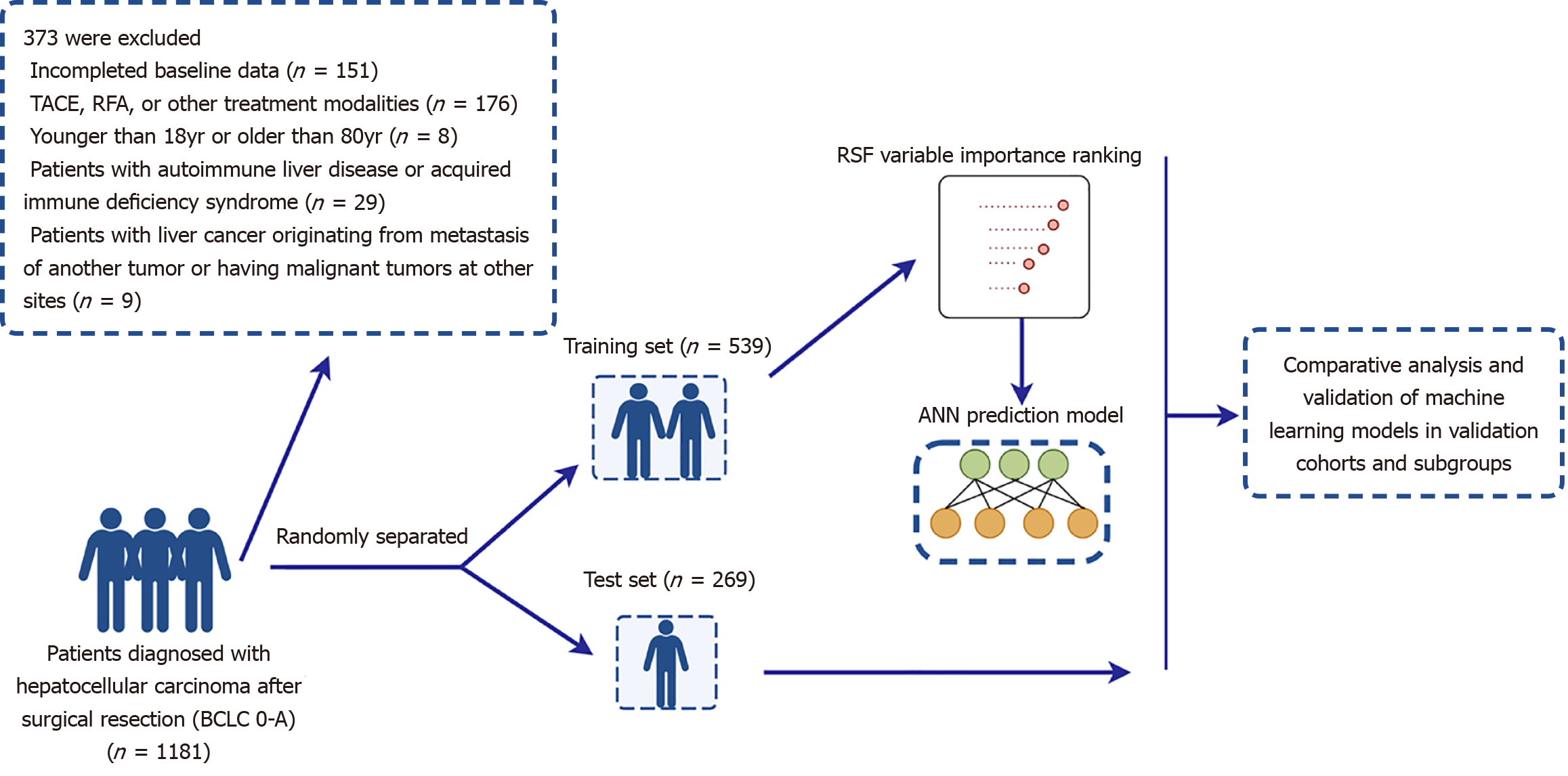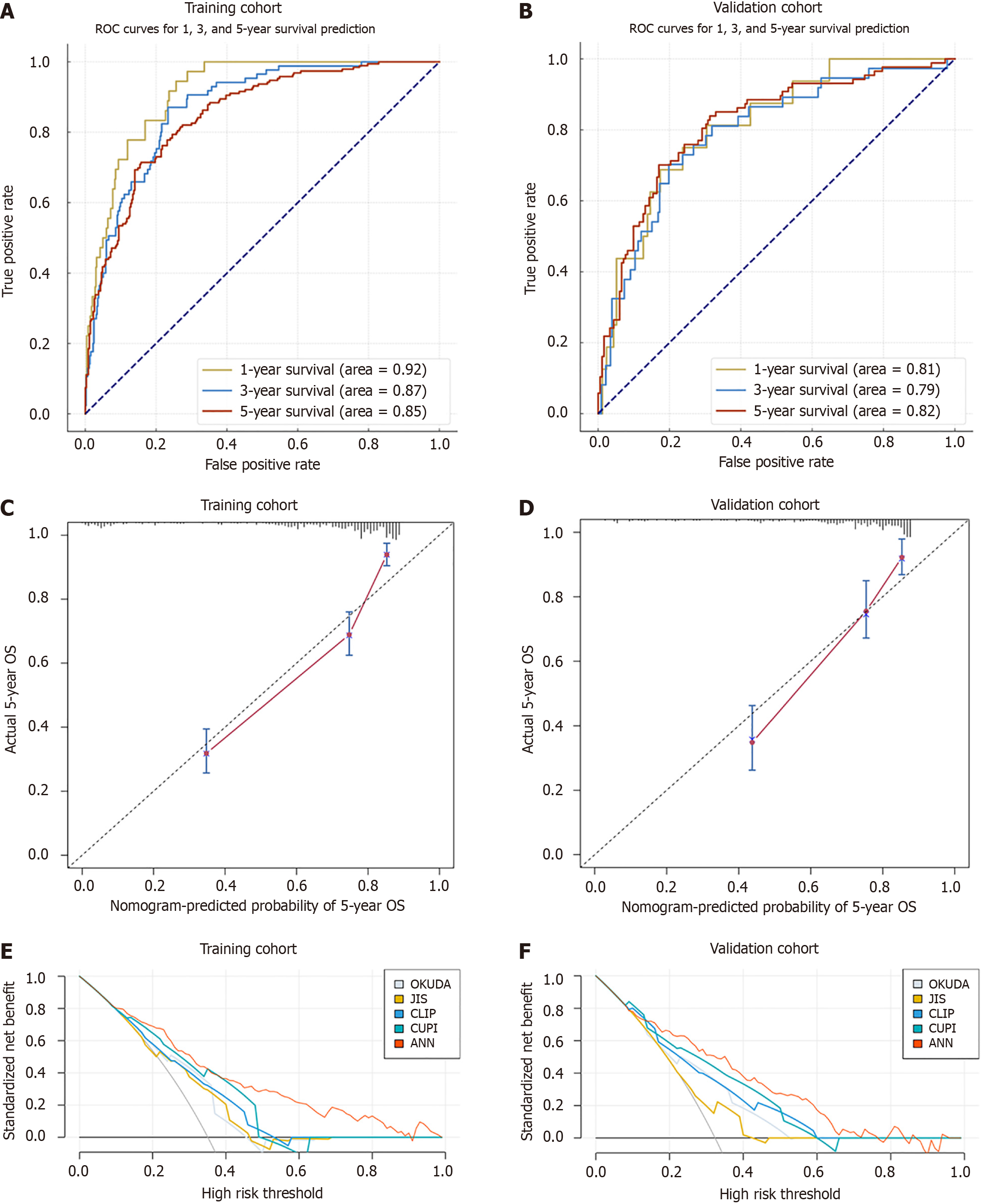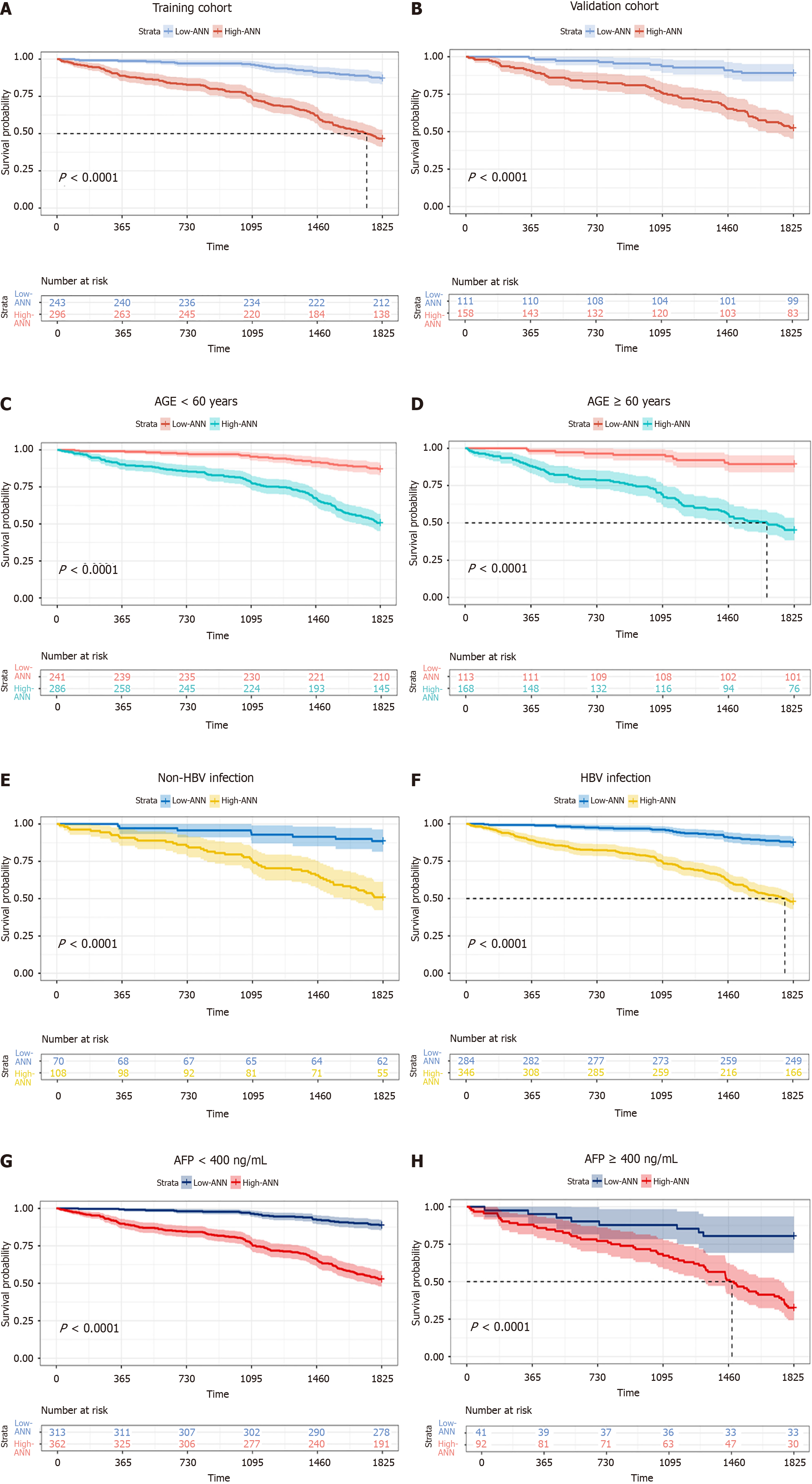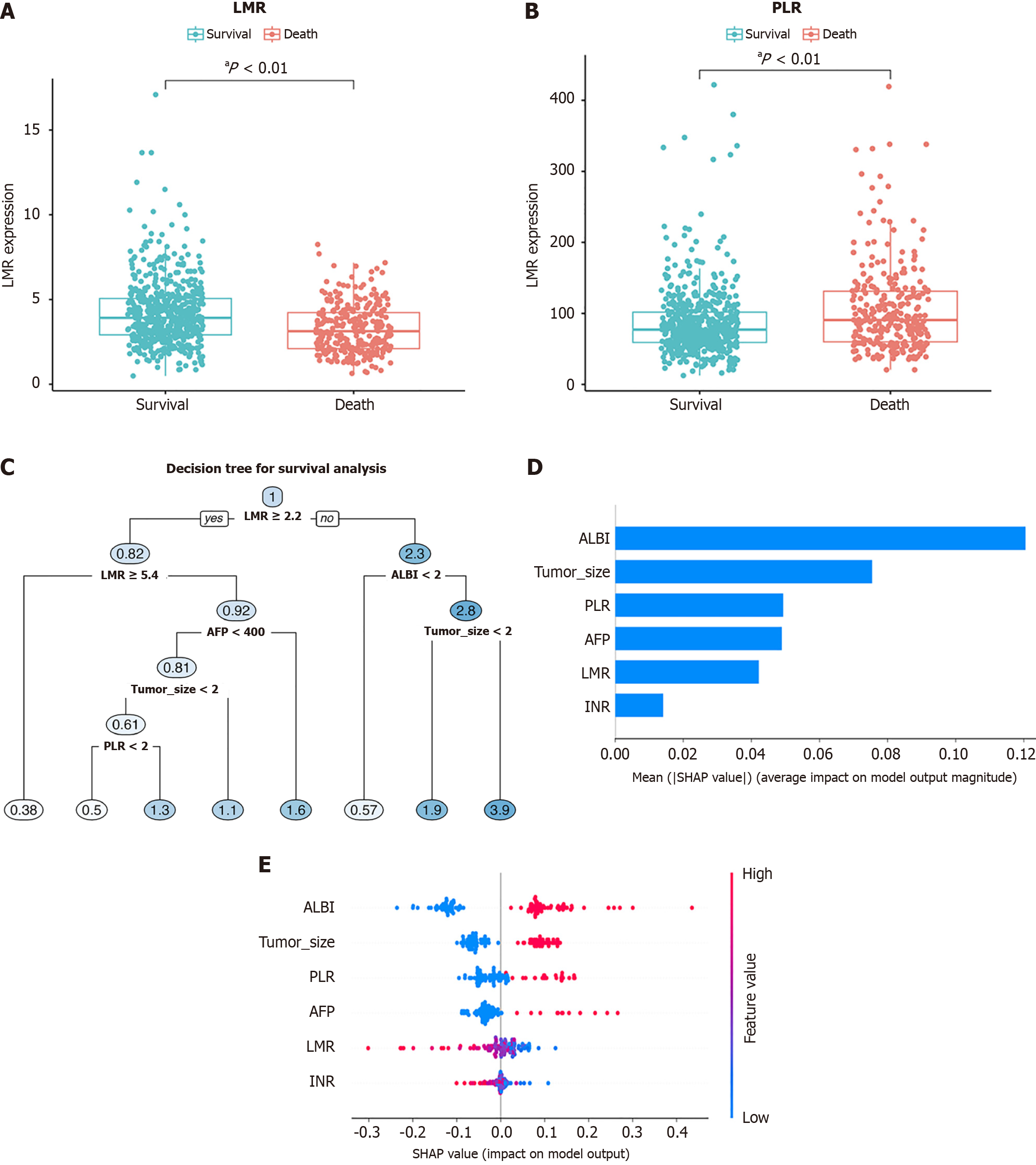Copyright
©The Author(s) 2025.
World J Gastroenterol. Feb 7, 2025; 31(5): 101722
Published online Feb 7, 2025. doi: 10.3748/wjg.v31.i5.101722
Published online Feb 7, 2025. doi: 10.3748/wjg.v31.i5.101722
Figure 1 Modeling process.
A: Top ten most important predictors based on random survival forests (RSF) analysis: Importance scores; B: Error rate and out-of-bag variable importance ranking from the RSF analysis; C: Predictors based on RSF analysis; D: Construction and specific structure of the artificial neural networks model. LMR: Lymphocyte-to-monocyte ratio; PLR: Platelet-to-lymphocyte ratio; ALBI: Albumin-bilirubin; AFP: Alpha-Fetoprotein; INR: International normalized ratio.
Figure 2 Graphical abstract patient enrollment and machine learning modeling process.
TACE: Barcelona Clinic Liver Cancer Staging; RFA: Radiofrequency ablation; BCLC: Trans arterial chemoembolization.
Figure 3 Evaluation of the predictive performance of the artificial neural networks model.
A and B: The area under the curve of the artificial neural networks in prediction of 1-, 3-, and 5-year mortality in the training cohort (A) and validation cohort (B); C and D: Calibration curves for predicting 5-year overall survival in the training cohort (C) and validation cohort (D); E and F: The decision curve analysis for predicting 5-year mortality in the training cohort (E) and validation cohort (F). ROC: Receiver operating characteristic; OS: Overall survival; RSF: Random forest analysis. ANN: Artificial neural network; RSF: Random survival forest; JIS: Japan integrated staging score; Okuda: Okuda staging system; CUPI: Chinese university prognostic index; CLIP: Cancer of the liver Italian program.
Figure 4 Kaplan-Meier curve analysis showing the efficacy of artificial neural networks levels as a predictor of 5-year mortality in patients with Barcelona Clinic Liver Cancer 0-A hepatocellular carcinoma after surgical resection across training and validation sets, different age groups, etiologies, and alpha-fetoprotein levels in the entire cohort.
A: Kaplan-Meier survival curves for the training cohort; B: Validation cohort; C: Age < 60 years; D: Age ≥ 60 years; E: Patients with hepatitis B virus (HBV) infection; F: Patients without HBV infection; G: Alpha-fetoprotein (AFP) < 400 ng/mL; H: AFP ≥ 400 ng/mL. P values were obtained using the log-rank test. AFP: Alpha-fetoprotein; HBV: Hepatitis B virus.
Figure 5 Prognostic significance of immune-inflammatory biomarkers in patients with hepatocellular carcinoma.
A: The levels of lymphocyte-to-monocyte ratio exhibited differences between patients in the survival and non-survival groups; B: The levels of platelet-to-lymphocyte ratio in the two groups; C: The decision tree model shows the 5-year overall survival probability of patients with hepatocellular carcinoma; D: The SHAP analysis displays the ranked importance of each feature in contributing to the overall predictions of the artificial neural networks (ANN) model; E: The SHAP analysis illustrates both the direction and magnitude of each feature's impact on the ANN model's predictions. LMR: Lymphocyte-to-monocyte ratio; ALBI: Albumin-bilirubin; PLR: Platelet-to-lymphocyte ratio; AFP: Alpha-Fetoprotein; INR: International normalized ratio.
- Citation: Zhang Y, Shi K, Feng Y, Wang XB. Machine learning model using immune indicators to predict outcomes in early liver cancer. World J Gastroenterol 2025; 31(5): 101722
- URL: https://www.wjgnet.com/1007-9327/full/v31/i5/101722.htm
- DOI: https://dx.doi.org/10.3748/wjg.v31.i5.101722









